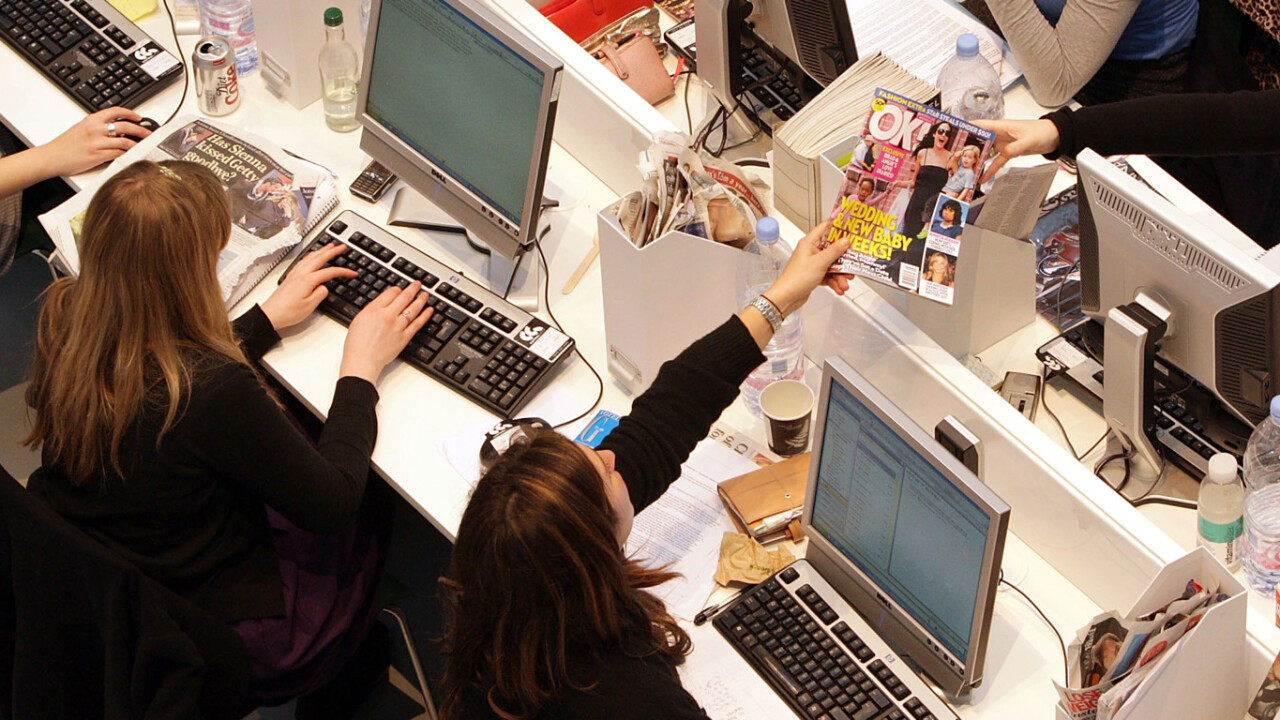
This post was originally published on the 15Five blog.
It’s very likely that if you’ve worked in an office at all, you’ve worked in an open-plan office. As a reaction against hierarchical workplace structures and a means to move employees away from working in boxes, they’ve become commonplace.
They’re a double-edged sword, however.
On the one hand, open-plan offices can inspire a more collaborative, innovative and social environment where ideas transfer easily between members of different departments and teams. On the other, open-plan workspaces are being recognized as a wildly distracting environment to to work in, where, according to one study by The Sound Agency, workers are 66% less productive.
Is it possible to foster productive collaboration in an open floor plan day in and day out? If so, the following tactics will help you stay sane and efficient.
Create a “virtual wall”
When it comes to open-plan offices, hell can be other people. The human brain only has the capacity for 1.6 conversations, according to Julian Treasure, TED speaker and author of Sound Business, and if your mind wanders to a nearby discussion, you don’t have much brain power left to work with.
If you are having trouble concentrating because of the voices and antics of your colleagues, you can create a “virtual wall” between yourself and the rest of your office. How to achieve this? It’s easier than you think. Headphones.
Even when we do retreat to our own worlds, it’s usually with music that neither helps concentration nor productivity. If you’re trying to stay productive, don’t play music with vocals, such as radio, podcasts or even lyric-filled songs, since they’ll only further use up your brain space.
“If you put music on top of noise, it’s like putting icing on top of mud; it might look like a cake, but it doesn’t taste like one,” says Treasure.
The best sounds for concentration are natural and unpredictable. Ambient electronic music tends to work well at blocking out noise yet it doesn’t create a distraction. Try binaural beats in stereo headphones. Neurophysiologists believe these sounds can induce the brain into a deep state of concentration, creativity and relaxation.
Have a “Collaboration Table” delegated
The key to keeping employees happy and productive is having a mix of spaces for different activities. According to a new study by design firm Gensler, it was found that workers spend more than half their time at work in deep focus and about one-fourth in collaboration, with the rest split between learning, socializing and other tasks.
Of course, people who work in an office still spend most of the day at their desks, but when it’s time to do some hard-core collaborating or learning, moving to a different environment can help shift gears. Delegate a larger central “community” table where conversation and ideas can flow freely. And encourage an environment of mindful chatter amongst neighboring desks.
Try rooms with high tables where everyone has to stand and the walls are floor to ceiling whiteboard. This arrangement will prompt presence and participation. Or conversely, have isolation rooms where people can go to be alone and silent. Try putting a chalkboard on the outside of the door where people can write what they’re working on inside. This way the rest of the team knows why they’re heads down and can leave them in peace to accomplish what they need.
If there’s space, keep the machines that contribute to high noise levels, like printers and photocopiers,in rooms away from the work area. The walk away from the desk will be an added benefit as it helps to stand up and walk around to regain focus and perspective.
Adopt a “do not disturb” attitude
In a study published in Applied Psychology, people seeking help performed better at work, but people providing help actually performed worse. Scientists determined that alternating between helping others and doing your own work imposes a heavy “cognitive load” because you have to reacquaint yourself with the details of your project each time you return to it. Not to mention –multitasking is a fallacy.
To counteract this, set aside a block of several hours every day when you’re not to be disturbed so you can concentrate on your work without distraction. Insist to your co-workers that it is important you not be disturbed during this block of time, unless of course there is an emergency. You can collaborate with and help colleagues during a later part of the day once you have given adequate focus to your top priorities.
While open-offices don’t work for everyone, they can have great impact on culture, innovation and collaboration. But like all good things, must be kept in balance.
Image credit: Oli Scarff/Getty Images
Get the TNW newsletter
Get the most important tech news in your inbox each week.





